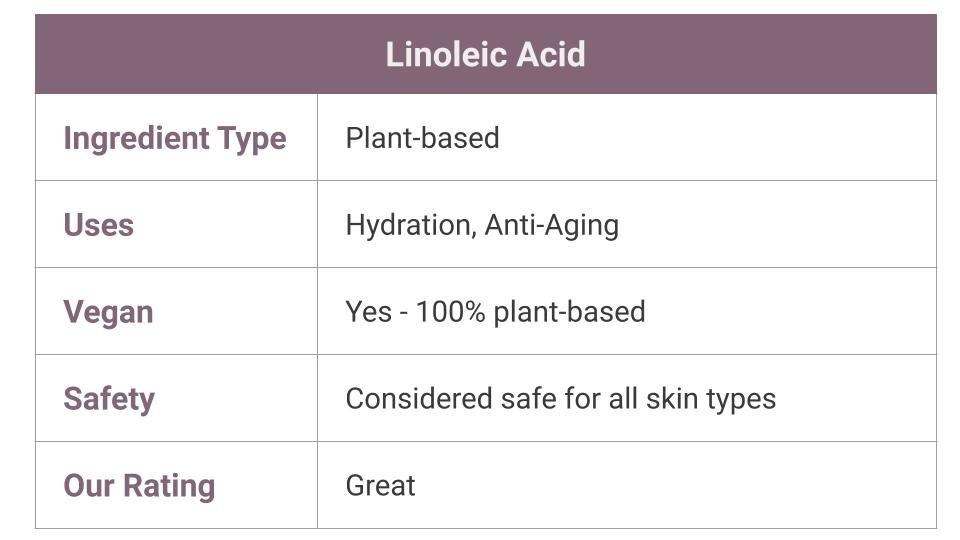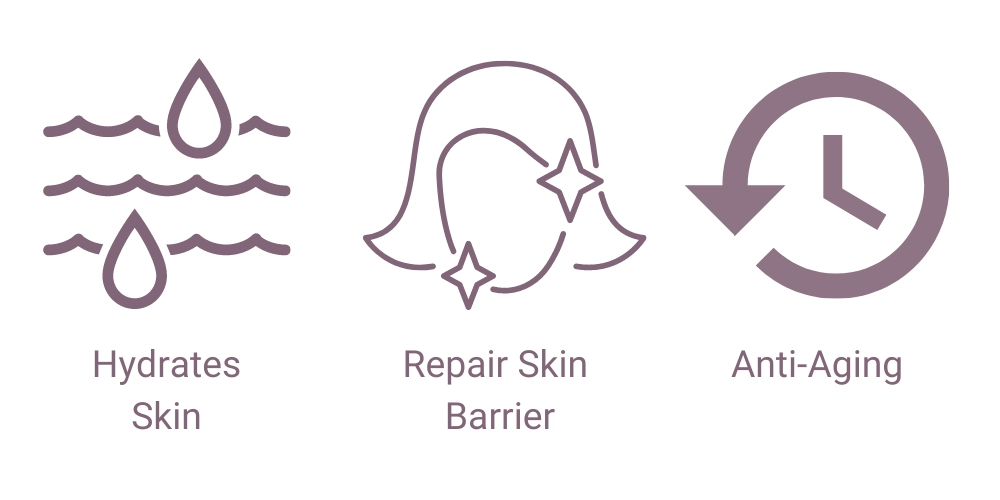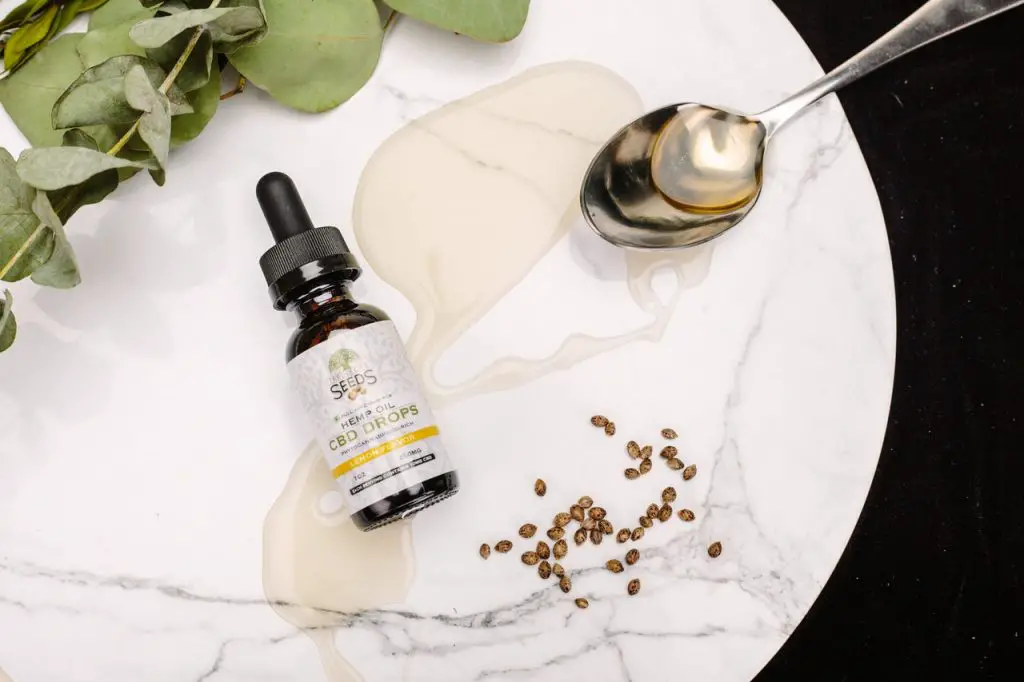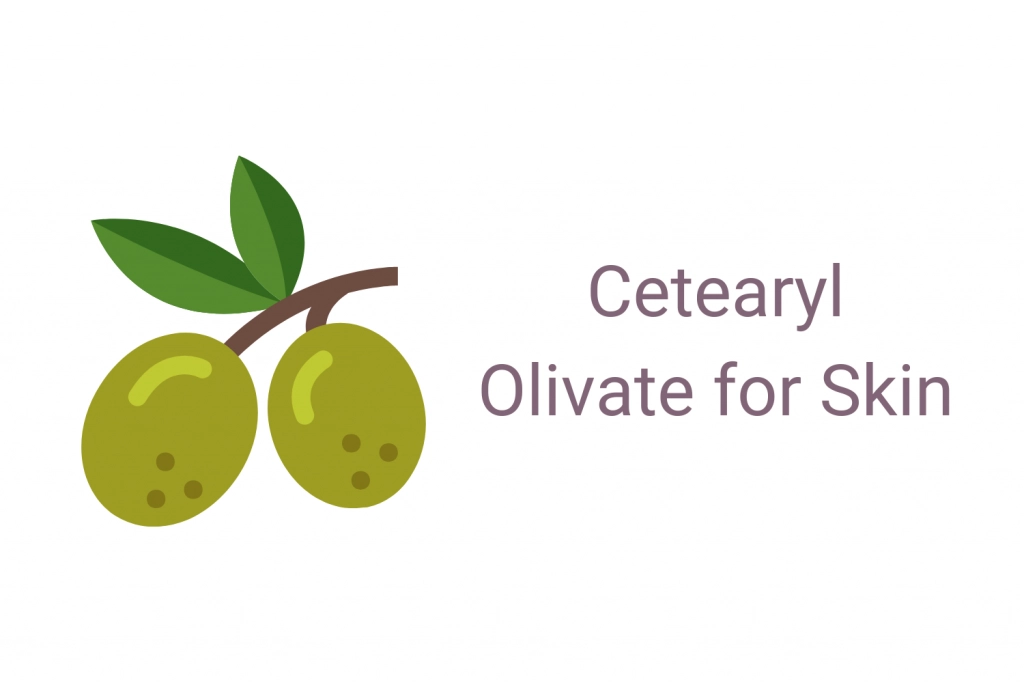As skincare enthusiasts, we read a lot about essential fatty acids, or EFAs. Linoleic acid is one of these fancy EFAs. These naturally occurring unsaturated fats are talked about because they have such amazing benefits for the skin. They’re also part of a balanced healthy diet.
This post may contain affiliate links. Read the full disclosure here
They are talked about soo much in major publications for their ability to hydrate, repair damaged skin, reduce the appearance of fine lines and wrinkles, and help you achieve plump, youthful skin.
Wondering what this fatty acid can do for you? You’ve come to the right place. Learn more about where you’ll find linoleic acid and what it can do for your skin!
What Is It?
Linoleic acid is the essential fatty acid, omega-6. The body can’t synthesize linoleic acid on its own, it needs to come from food. This powerful ingredient is critical for cell and tissue growth. That is why you see all the health craze about nuts and oils to get enough omega-6 in your diet.
But what about for the skin, do we naturally have linoleic acid in our skin? We do! You’ll find it in the epidermis, the outermost layer of the skin. In fact, linoleic acid plays a critical part in the function of the skin barrier.
When learning about linoleic acid, you may hear it in context with Vitamin F. While it’s technically not a vitamin, it refers to the combo of linoleic acid (an omega-6 acid) and linolenic acid (an omega-3 acid).

Linoleic Acid Skin Benefits
Linoleic acid is loved in the skincare community for its wide range of skin benefits. It can hydrate and soften skin, help repair the skin barrier, balance acneic skin, and help the skin properly retain moisture. It has amazing hydrating, skin balancing, and healing properties. In other words, it is a great ingredient to keep your skin happy and healthy.

Hydration
Linoleic acid replenishes moisture without excess oiliness. It can also help the skin retain moisture leaving the skin softer, smoother, and more supple. Who doesn’t want a youthful, plump complexion?
Can Help Repair Skin Barrier
A healthy skin barrier is vital to healthy skin. It helps keep in skin moisture while keeping irritants and bad things out. Linoleic acid supports the development of ceramides, which are essential for skin barrier health.
When applied topically linoleic acid can also help repair the skin barrier. A healthy barrier leads to smooth, hydrated, happy skin.
Linoleic Acid for Acne
It’s been found that skin with acne tends to be lacking linoleic acid. Instead, you tend to find higher levels of oleic acid (which can be found in sebum). Oils rich in linoleic acid are thinner and lighter making them better options for acne-prone or oily skin.
One study found that the size of microcomedones (very small start of a pimple forming on skin) were reduced in size by 25% with a topical linoleic acid application. No changes were found with the placebo.
Anti-Aging
Adding linoleic acid to your daily skin routine can also help you achieve a plump, youthful glow. By hydrating and replenishing skin, it can do wonders for mature skin. It’s even more powerful when combined with other fatty acids.
It can help reduce the appearance of age spots, brighten dull skin, and visibly reduce fine lines and wrinkles. With your skin healthy and protected, you can also slow the signs of aging. Fight off stressors that can lead to premature aging.

Oils High in Linoleic Acid
Here are some of the most popular oils high in linoleic acid:
- Amaranth Seed Oil – 50% linoleic acid
- Argan Oil – 30-38% linoleic acid, but also high oleic acid as 42-48%
- Cranberry Seed Oil – 30-35% linoleic acid
- Evening Primrose – 70-74% linoleic acid
- Grapeseed Oil – 70% linoleic acid
- Hemp Oil – 52% linoleic acid
- Kukui Nut Oil – 40% linoleic acid
- Prickly Pear Seed Oil – 60% linoleic acid
- Pumpkin Seed Oil – 65% linoleic acid
- Rosehip Oil – 45% linoleic acid
- Safflower Oil – 70-80% linoleic acid
- Sesame Oil – 42% linoleic acid
- Sunflower Oil – 74% linoleic acid
- Walnut Oil – 58% linoleic acid
You’ll find the actual ranges of linoleic acid in the oils may vary depending on when, where, and how they are sourced. But these offer good benchmarks to get a sense of how these oils are composed. Most on the list above are predominantly linoleic acid.
On the other hand, oils such as argan oil are a bit more balanced with other fatty acids.
Linoleic Acid Safety
Linoleic acid is an amazing multi-tasking, skin-loving ingredient. But are there any concerns about using it for skin? Is it safe?
Yes, linoleic acid is considered safe to use for all skin types. The Cosmetic Ingredient Review Expert Panel deemed linoleic acid, along with 101 other fatty acids safe to use in cosmetics when formulated to be non-irritating and non-sensitizing.
One thing to watch out for with linoleic acid is its shorter shelf-life. Products or oils high in linoleic acid may not last as long. The ingredient is naturally less stable. Products may only last 3-6 months before they expire or lose effectiveness.
Best Linoleic Acid Oils
Linoleic acid is a fantastic skincare ingredient that promotes balanced, healthy, glowing skin. What more can you want? Well, linoleic acid does best with friends. It’s the same reason you don’t find skincare products promoting that they’re pure linoleic acid.
The best way to incorporate this in your routine is with a balanced natural oil. Get all the benefits of linoleic acid plus the replenishing benefits of oleic acid and nourishing vitamins. With that in mind, you might be wondering, what are the best oils with linoleic acid?
Rosehip Oil
You’ll find rosehip oil in the list above based on its high linoleic acid content. But rosehip also a balance of oleic acid, palmitic acid, and gamma linolenic acid. On top of that, it also contains vitamin C and vitamin A. This lovely combo makes for a wonderful anti-aging oil.
Rosehip oil skin benefits:
- Smooth fine lines and wrinkles
- Anti-inflammatory and healing properties
- Hydrate and replenish skin
- Helps even tone and texture
- Brightens skin
Amaranth Seed Oil
Amaranth seed oil is another lovely oil with high linoleic acid content. But that’s not all! It also contains oleic acid, palmitic acid, and stearic acid. You’ll also find vitamins, minerals, flavonoids, and squalane as part of its makeup.
In fact, amaranth seed oil has the highest amount of squalane out of all plant sources! This nutrient-packed oil offers great benefits for the skin
Amaranth Seed Oil Benefits:
- Hydrate dry, damaged skin
- Anti-aging benefits – fight wrinkles and fine lines
- Fight free radicals
- Smooth and soften skin
- Anti-inflammatory properties
Argan Oil
Argan oil is another balanced oil that we love. This one has slightly more oleic acid but it has a nice balance of linoleic acid too. It’s a rich oil great for dry, damaged, or mature skin. In addition to fatty acids, it also naturally contains vitamin E, carotenes, and squalene.
It’s a great oil for the skin but it’s also a popular ingredient in hair care.
If you love both argan oil and rosehip oil, you’ll want to read our comparison article here.
Argan Oil Benefits:
- Hydration, without excess oiliness
- Fight free radicals
- Can help fight acne and blemishes
- Anti-aging benefits
Cranberry Seed Oil
Cranberry seed oil is catching on in the skincare space. It offers a wide variety of fatty acids (including linoleic acid), vitamin A, vitamin C, vitamin E, and phytosterols.
This blend of nourishing ingredients can do wonders for the skin. You’ll find it in serums, face oils, masks, lip balms, and lotions.
Cranberry Seed Oil Benefits:
- Soothes and protects skin
- Hydrates
- Scalp and hair health
- Antioxidant properties
- Anti-aging
Grapeseed Oil
As noted above, grapeseed oil has a very high linoleic acid content. If you are on the hunt for a natural linoleic acid oil, grapeseed is the way to go. It’s generally used as a carrier oil (mixed with other ingredients) but it can be applied directly to the skin.
It’s a great lightweight moisturizer, even for sensitive skin. While grapeseed oil is mostly linoleic acid it also contains oleic acid, stearic acid, palmitic acid, myristic acid, and lauric acid.
Grapeseed Oil Benefits
- Hydrate skin without clogging pores
- Safe for sensitive and acne-prone skin
- Soften and smooth skin
- Helps even tone and texture
Using Linoleic Acid in Skincare
Linoleic acid offers a wide range of skin benefits with limited concerns or risks. We the benefits it offers and how it can be found in most natural, plant-based oils. While you don’t need to go on a hunt for a pure linoleic acid serum (they don’t exist), it is worth finding oils or products that use a mixture of oils containing linoleic acid.
When balanced with other fatty acids, vitamins, and antioxidants, it makes for a great anti-aging, hydrating, and skin-protecting ingredient. No wonder why it’s become a staple in the skincare community.
If you loved learning about linoleic acid, you’ll love our deep dive on Oleic acid here. Also see our comparison article of oleic acid vs. linoleic acid.
Resources
- Biochim Biophys Acta. 2017 Sep; 1859 (9Part B): 1679–1689. doi: 10.1016/j.bbamem.2017.03.016
- https://pubmed.ncbi.nlm.nih.gov/9692305/
- https://online.personalcarecouncil.org/ctfa-static/online/lists/cir-pdfs/FR777.pdf









